Gujo Hachiman is famous for its sake, ayu fish and soba due to its pristine waters. On our second day, we managed to wine and dine through all three specialties and are glad to report them to be excellent as advertised!
Gujo Hachiman’s other claim to fame is its ‘incredible inedible’ industry. The town’s numerous workshops supply shokuhin sanpuru (aka fake food) to about 80% of the nation’s restaurants. We ended up taking a hands-on tour factory tour after sampling sake at the Ueda sakaya (sake store). Luckily the tasting did not affect our artistic ability when it comes to making fake food – or maybe none was required?!
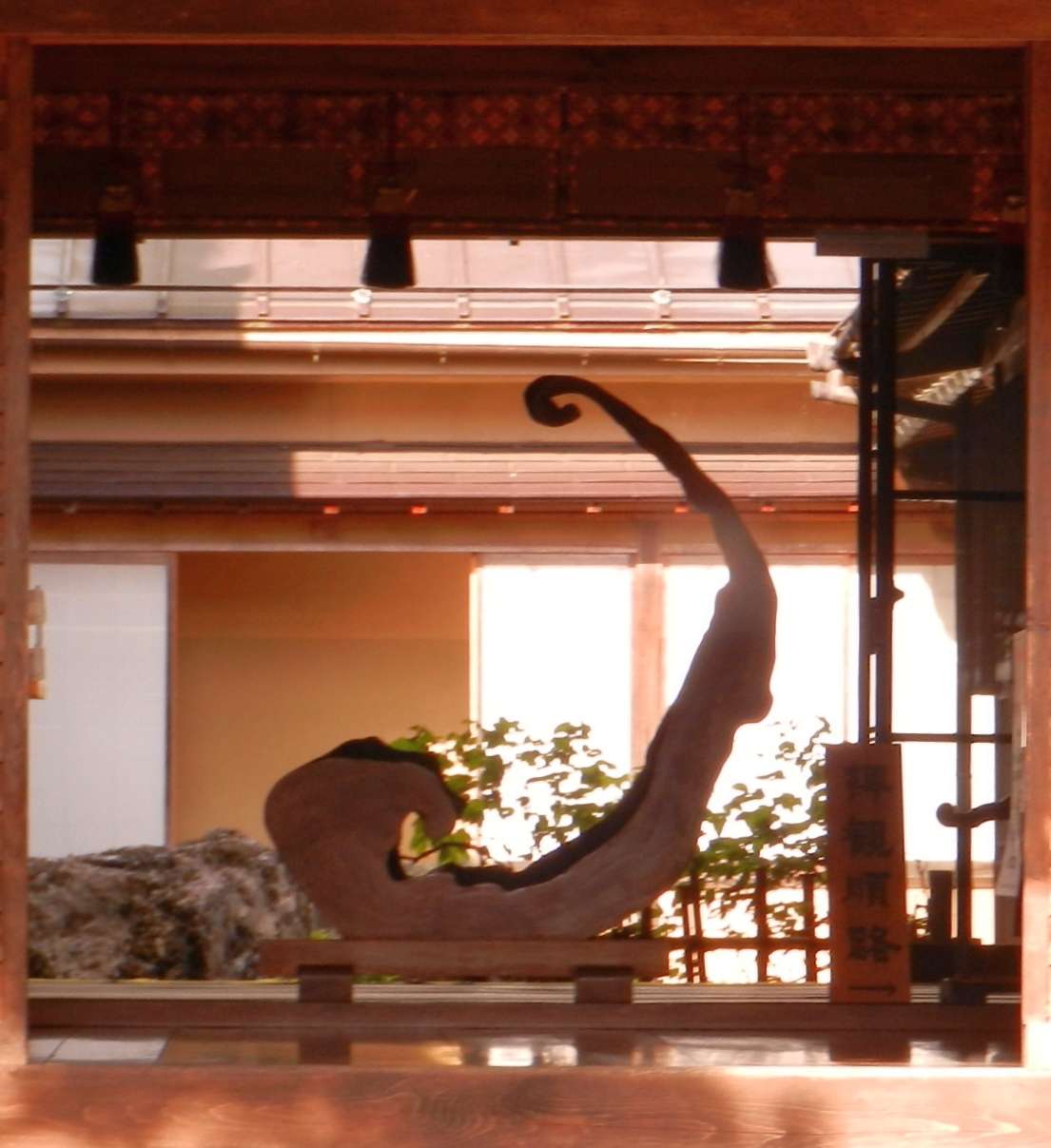
I came across this surprisingly contemporary work on the grounds of a temple.
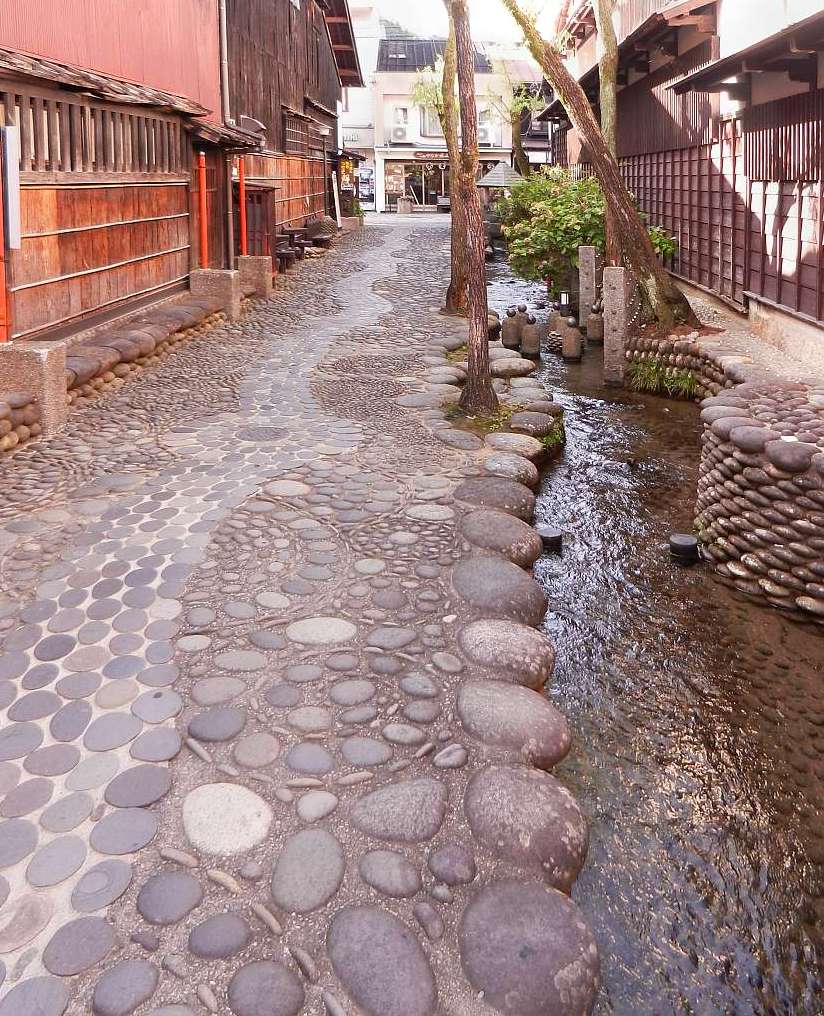
The picturesque alley lives up to its Water Town image. On both sides of this pedestrian-only street are some well preserved Edo-era homes built in the Kyoto style. The buildings, like New Orleans’ famed shot gun houses, are deeper than they are wide.

Purportedly some 80 thousand round rocks are used in the paving, and ‘80,000’ is pronounced as ‘hachiman’ in Japanese. Of course, this may just be another urban legend…
We visited Sample Kobo and signed up for a taiken (class) to make fruit tart replicas. It was fascinating to watch the staff help tourists make fake lettuce. Then it was time to try our hand at filling heart shaped tartlets with whipped cream and berries. It was a blast and we triumphantly took our creations as mementos of the visit.
The gift shop proffers some very realistic and imaginative souvenirs that are a far cry from the pedestrian versions we see back home. Here is a veritable monster of a tempura!

A tempura food replica with Godzilla, the popular Japanese B-movie and pop culture icon, from the gift shop.
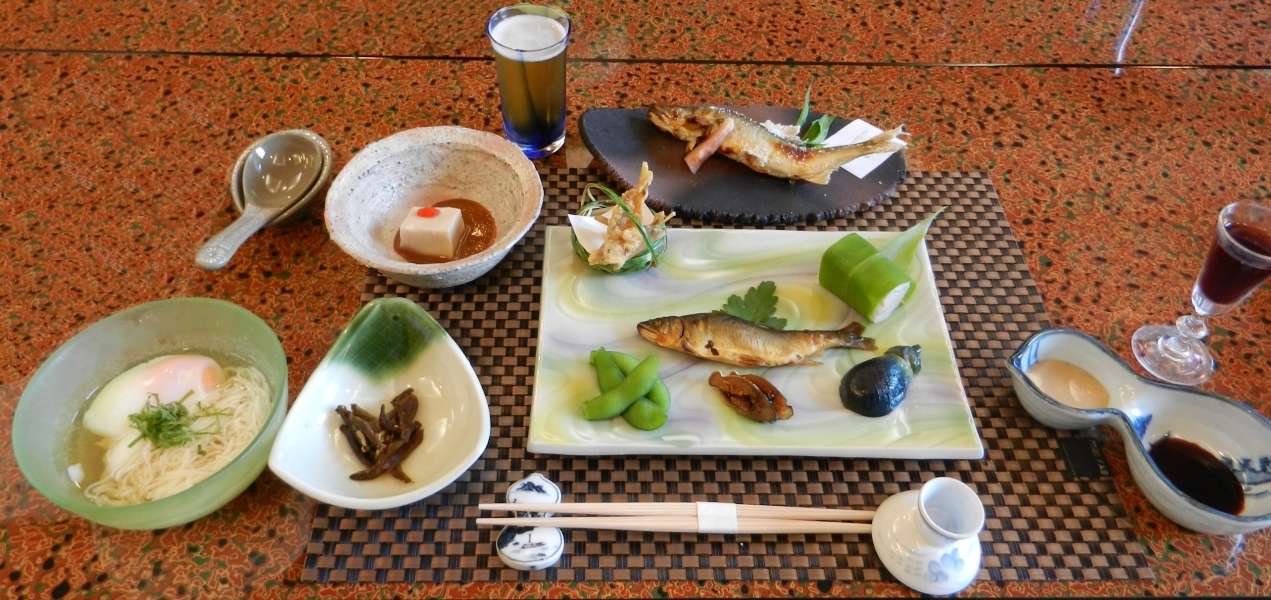
Since the kaiseki dinner is part of our room package, we decided to enjoy it the night of the dance. The dining table was set with all these dishes at the START of our dinner. The food kept coming with ayu, the seasonal delicacy, and all its parts prepared in every guise imaginable.
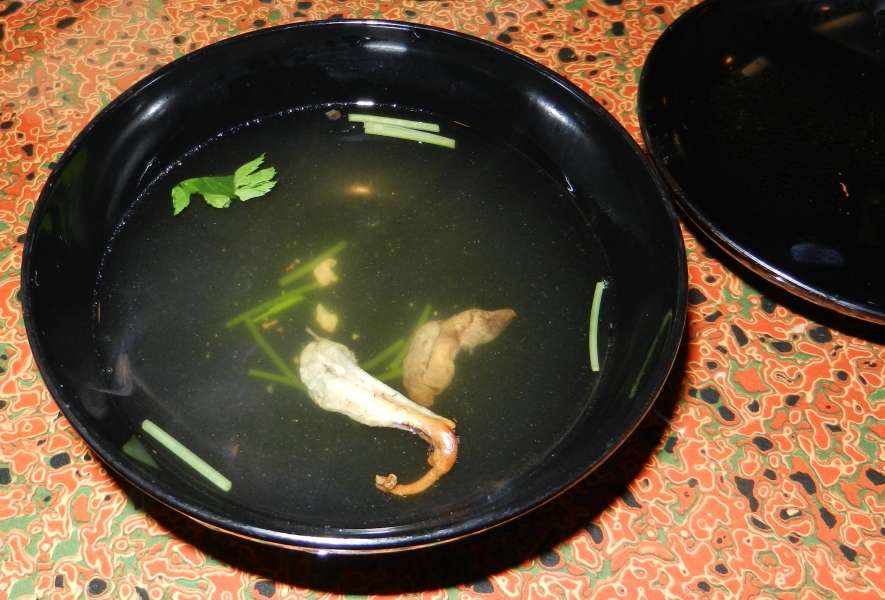
It was a true cultural and culinary experience that left me stuffed to the gills. But considering the cost, anyone with strict dietary preferences should check into local seasonal offerings before booking any kaiseki dinner.
A benefit of staying at ryokans is that most provide yukatas (summer kimonos) and getas (traditional wooden sandals) so guests can wear them at the lodge or out to town for the dance. The Gujo Odori traditionally is held at different locations such as the Gujo Castle, temples, parks, or town streets on designated nights. We were only able to catch one night of dances. Luckily the venue was very close to our ryokan so although walking in getas was uncomfortable to the uninitiated, hoofing it back after the dance wasn’t a crippling concern, so to speak!
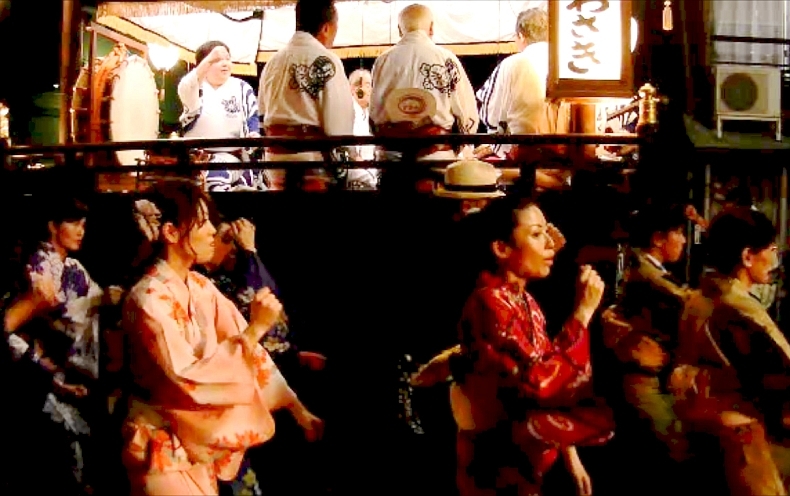
I love elaborate traditional kimonos, but I also enjoy the fun yukatas worn by some of the young people in this video. You can see some of the participants are pacing their moves in this hot and humid night.
And here’s what we missed when we were busy with the Odori.
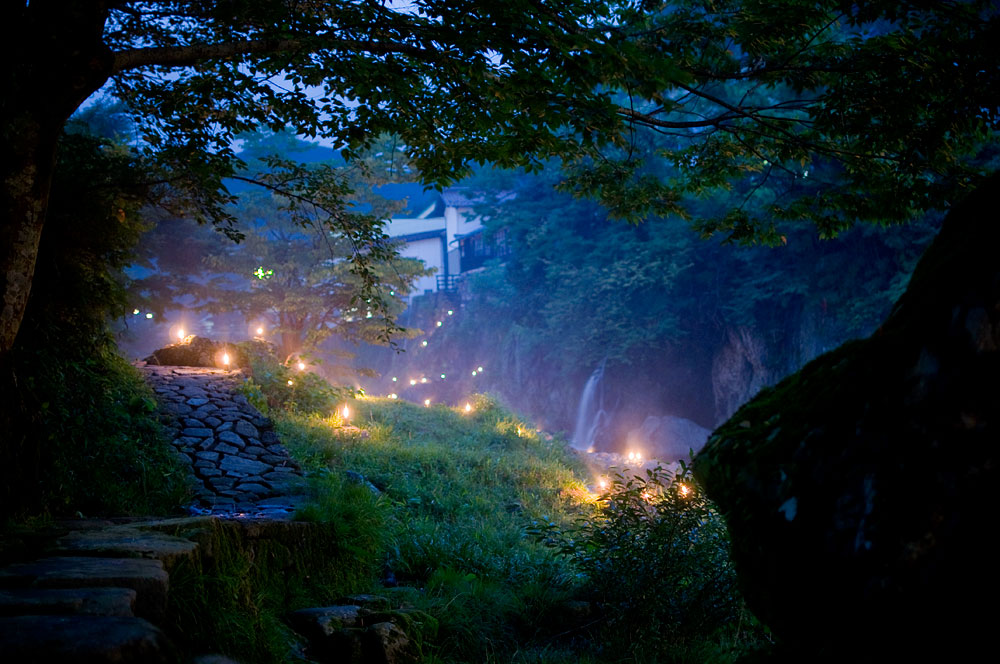
Every night of Gujo Odori, lanterns and candles line the banks of the river. I think since there was no dance on our first night out, the river was dark (or we didn’t go by the right river!). On the second night we were busy eating and dancing so it totally slipped my mind. However I stumbled upon this image online – so beautiful…
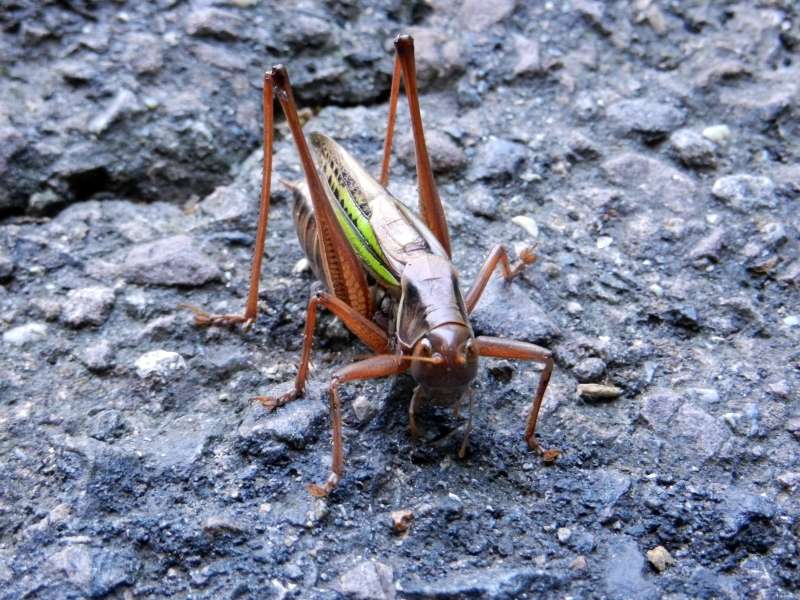
I found this cricket on our walk to Gujo Hachiman Castle the next morning, poised to wrestle with whatever comes its way.
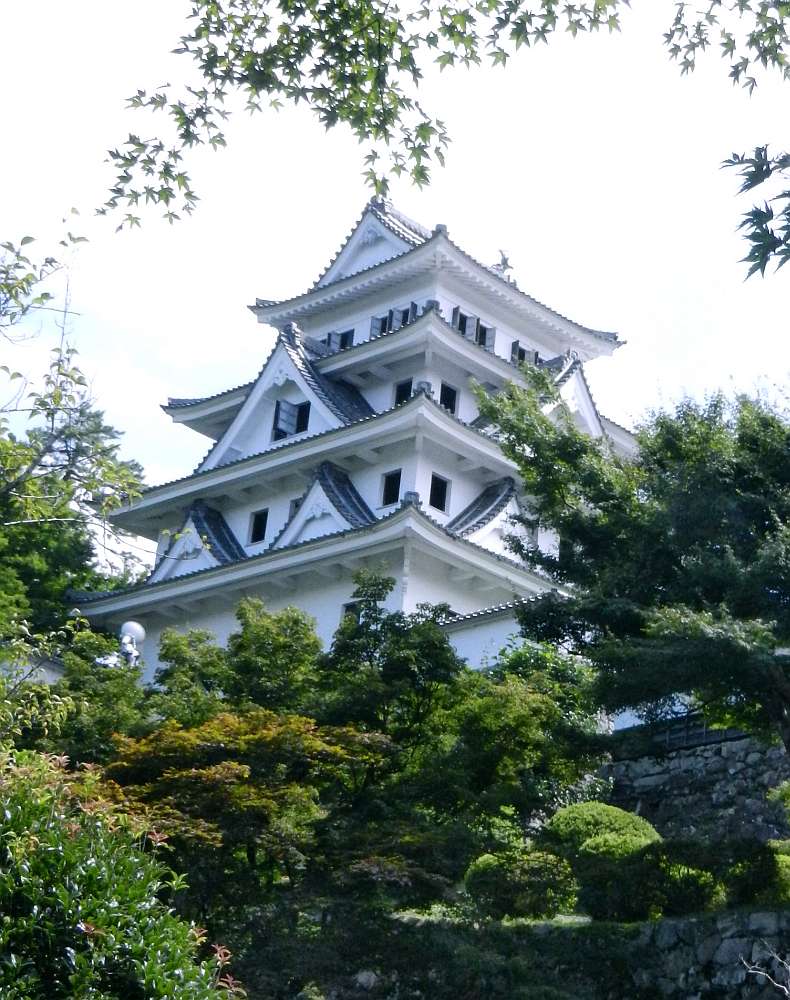
The feudal castle, dating from 1559, was rebuilt in 1933 and now serves as a museum. It sits on a hill about 20 minutes from town. We entertained ourselves taking pix as we hiked up the steep switchbacks, so it took a lot longer. Once there, the castle offers panoramic views from the top floor.
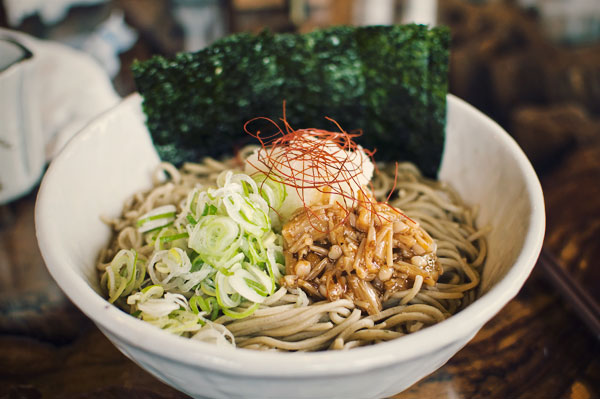
We headed for Hirajin Soba, a small restaurant overlooking the Yoshida River and making handmade soba for generations. As we waited in line, we ran into a fellow traveler from last night. Turned out she is the niece of Japanese artist Kawai Kanjirō, whose Memorial House we toured in Kyoto a couple days ago. Small town, small world!
All too soon, it was time to leave Japan. After lunch, we took the bus back to Osaka and flew out the next morning. Though a whirlwind tour, it successfully hit all the highlights: we reveled in the colorful pageantry of the Tenjin Matsuri, marveled at the cultural splendors of Kyoto and were party to (no pun intended) the centuries old festivities at Gujo Hachiman’s Gujo Odori. Japan is a country rich with festivals and traditions, where thousands turn out to celebrate through music, dance, processions and floats.
It’s hard not to be charmed. To echo The Terminator, I’ll be back!


